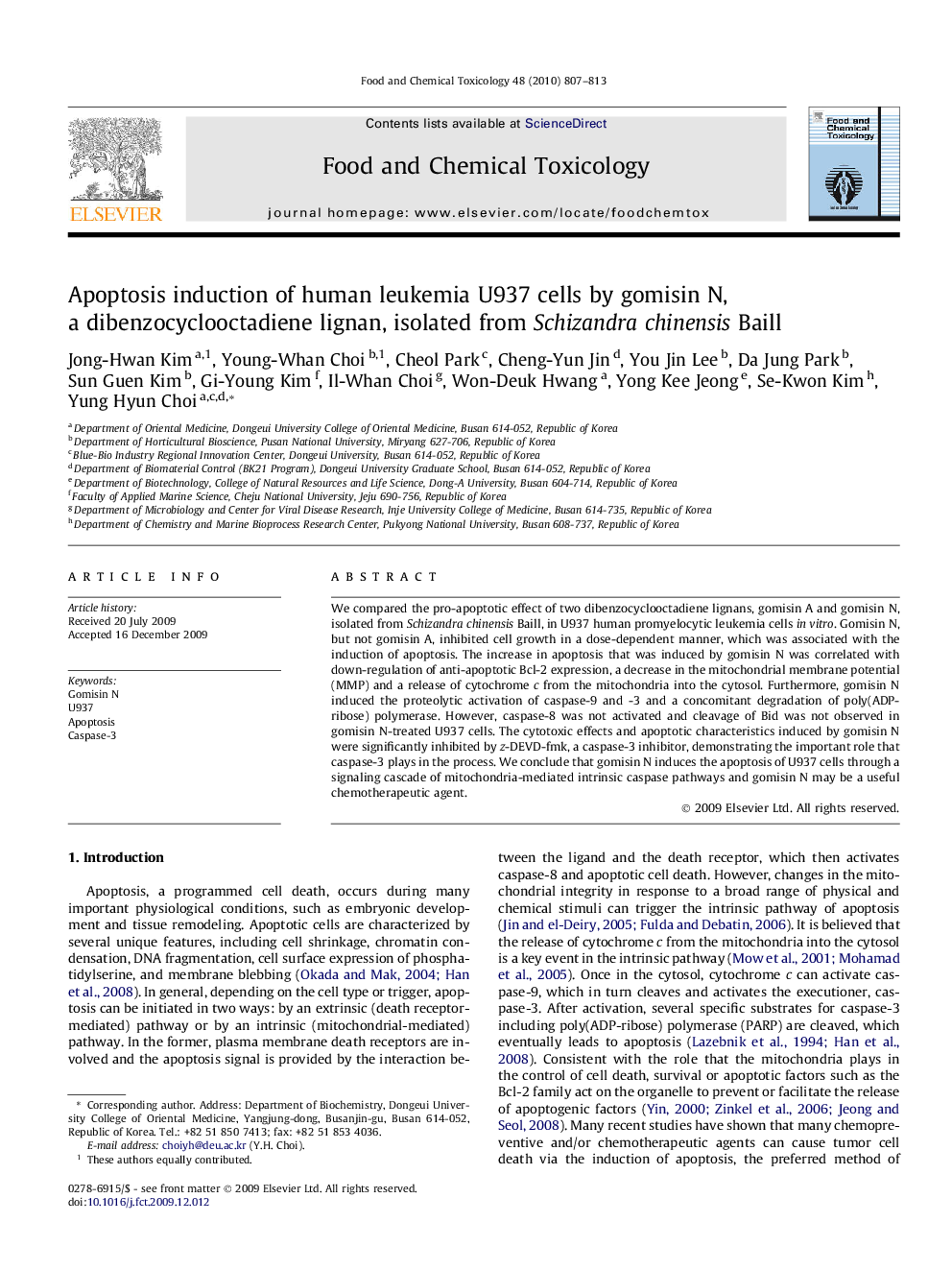| Article ID | Journal | Published Year | Pages | File Type |
|---|---|---|---|---|
| 5853963 | Food and Chemical Toxicology | 2010 | 7 Pages |
Abstract
We compared the pro-apoptotic effect of two dibenzocyclooctadiene lignans, gomisin A and gomisin N, isolated from Schizandra chinensis Baill, in U937 human promyelocytic leukemia cells in vitro. Gomisin N, but not gomisin A, inhibited cell growth in a dose-dependent manner, which was associated with the induction of apoptosis. The increase in apoptosis that was induced by gomisin N was correlated with down-regulation of anti-apoptotic Bcl-2 expression, a decrease in the mitochondrial membrane potential (MMP) and a release of cytochrome c from the mitochondria into the cytosol. Furthermore, gomisin N induced the proteolytic activation of caspase-9 and -3 and a concomitant degradation of poly(ADP-ribose) polymerase. However, caspase-8 was not activated and cleavage of Bid was not observed in gomisin N-treated U937 cells. The cytotoxic effects and apoptotic characteristics induced by gomisin N were significantly inhibited by z-DEVD-fmk, a caspase-3 inhibitor, demonstrating the important role that caspase-3 plays in the process. We conclude that gomisin N induces the apoptosis of U937 cells through a signaling cascade of mitochondria-mediated intrinsic caspase pathways and gomisin N may be a useful chemotherapeutic agent.
Related Topics
Life Sciences
Agricultural and Biological Sciences
Food Science
Authors
Jong-Hwan Kim, Young-Whan Choi, Cheol Park, Cheng-Yun Jin, You Jin Lee, Da Jung Park, Sun Guen Kim, Gi-Young Kim, Il-Whan Choi, Won-Deuk Hwang, Yong Kee Jeong, Se-Kwon Kim, Yung Hyun Choi,
